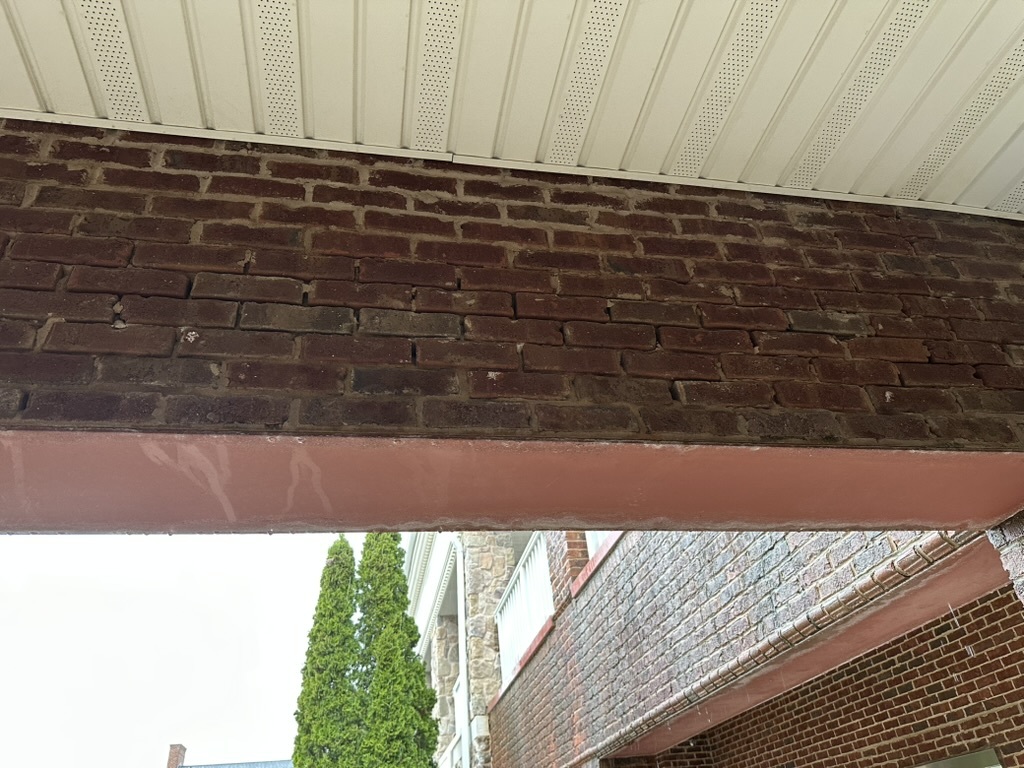When people think of threats to a commercial building, they often imagine fires, storms, or structural failure. But one of the most persistent and costly enemies is much quieter: water. Not a flood, not a burst pipe, just the slow, steady flow of water over time. At Bright Leaf Commercial Property Inspections, we’ve seen firsthand how unaddressed water issues can lead to major structural problems and costly repairs. Recently, we’ve seen significant damage to mortar due to rainwater seeping into the interior brick wall of an office complex (see photo).
How Water Finds Its Way In
Water doesn’t need much to cause damage. All it takes is a small crack, a minor leak, or an overlooked drainage issue. Common entry points include:
- Cracks in foundations or exterior walls.
- Roof seams and flashing.
- Poorly sealed windows and doors.
- Clogged gutters and downspouts.
- HVAC or plumbing systems with slow leaks.
Once water finds a path, gravity does the rest…pulling it into basements, behind walls, and under floors where it quietly erodes materials and fosters mold growth.
The Long-Term Effects of Constant Moisture
Structural Weakening
Over time, water can compromise the integrity of structural elements. Wooden framing can rot, metal components can rust, and concrete can crack and deteriorate, especially in freeze-thaw climates where water expands as it freezes.
Mold and Mildew Growth
Even small, persistent leaks can create perfect conditions for mold. This not only damages materials but also poses health risks to occupants, especially in tightly sealed office buildings.
Degraded Insulation
Moisture in walls and attics reduces the effectiveness of insulation, leading to higher energy costs and less comfortable interior environments.
Interior Damage
Ceiling stains, warped flooring, and peeling paint. These cosmetic issues often signal deeper, hidden problems. Left unchecked, what starts as an eyesore can become a major repair.
Foundation Issues
Constant water flow around a building’s foundation can lead to settling, cracking, and even basement flooding. Poor drainage is one of the most common causes of long-term structural damage.
Prevention and Early Detection
The good news? Most water damage from constant flow is preventable. Here are a few key strategies:
- Regular inspections, especially after storms or seasonal changes.
- Proper grading and drainage to keep water flowing away from the building.
- Routine roof and gutter maintenance.
- Monitoring interior humidity levels and checking for musty smells.
- Promptly addressing any signs of moisture, even small ones.
Conclusion
Water damage doesn’t happen overnight. But it does happen. That’s why proactive maintenance and regular inspections are critical for commercial property owners. At Bright Leaf Commercial Property Inspections, we specialize in identifying early warning signs before they turn into costly repairs. Because when it comes to water, what you can’t see can definitely hurt you.
Need a professional eye on your property?
Contact us today to schedule a comprehensive inspection and stay ahead of water damage before it flows out of control.


